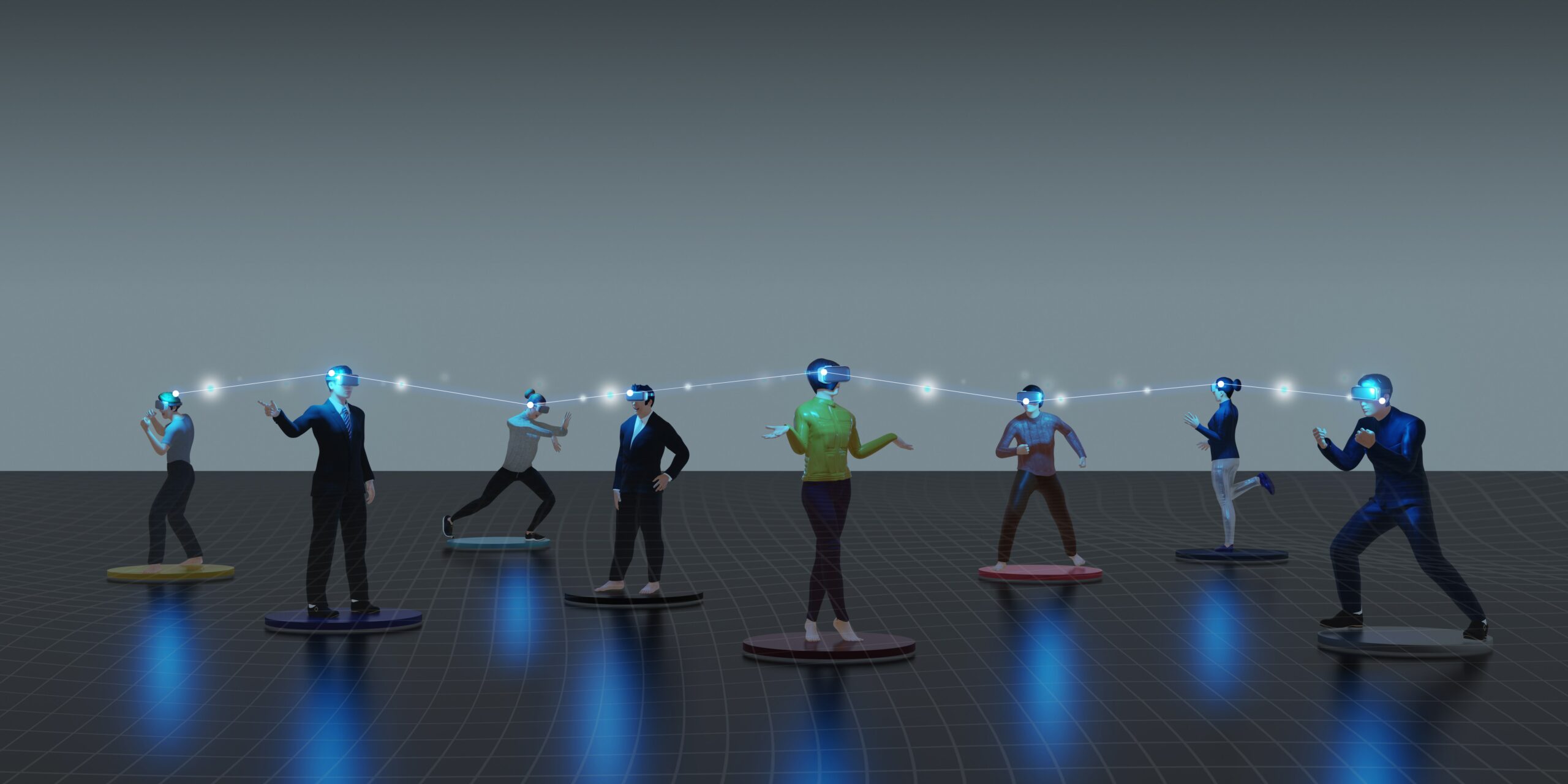A tight-knit, steady and inclusive organizational culture plays a central role in leading productive teams and fostering happy workplaces. That’s why employers should address their employees’ needs and include them in their long-term goals.
Besides ensuring workers have a good experience, companies will have higher revenues and overall performance. After all, happy people are 31 percent more productive and three times more creative. Happiness also improves business profitability by 147 percent. Therefore, neglecting employee satisfaction and company culture could have significant negative consequences for the business, such as the inability to attract top talent.
We know where we want to ultimately land, but the obvious question is: How can business and HR leaders maintain positive workplace sentiments and encourage a sense of belonging among workers? The answer is developing a culture of caring.
Developing a culture of caring means employers continuously seek ways to keep happiness levels in the work environment high and implement efficient strategies to help employees thrive. Organizations should foster inclusion and encourage employees to help their team members grow and feel comfortable in the workplace.
As employee engagement increases, performance improves and companies find it easier to attract qualified candidates. Moreover, workers who are happy with the company culture are less likely to quit. These benefits stimulate business continuity and help companies gain an invaluable competitive edge. Even though a culture of caring was always beneficial, the COVID-19 crisis highlighted its value.
How the pandemic increased the importance of a culture of caring
Despite the grief, uncertainty and loss the pandemic caused, it also provided significant lessons. It reminded us we are human and, although we have unique differences, when a global challenge happens, we can work together to overcome anything.
COVID-19 didn’t spare anyone, changing our world across many levels. Our shared experience activated resilience and reinforced motivation and adaptability. But the nature of COVID-19 made it challenging to keep connections alive since we couldn’t safely meet in person. Small acts of kindness and empathy compensated for the lack of physical touch. And the pandemic didn’t only alter personal relationships. It also changed the way we work and collaborate. Social distancing accelerated remote work, and it turned out employees prefer it that way.
However, 50 percent of companies want workers back in the office five days a week. But most workers disagree, finding it hard to understand what makes a company culture more visible in physical spaces. Hybrid work aims to bridge the gap between office work and telework, ensuring employees can choose what works best for them. For instance, 74 percent of U.S. companies use or plan to introduce this model.
Most employers understand it’s necessary to address employee needs and find the middle ground. But it also indicates they know the importance of making their workers aware they care about them. Otherwise, companies could lose the trust of their hires and disrupt workplace stability. On the other hand, hybrid work also makes the culture of care development more difficult.
Hybrid work and the challenge to cultivate a culture of caring
Before the pandemic, people perceived proximity as necessary for developing unbreakable bonds and feeling close to someone. It’s no surprise more than one-third of employers struggled with maintaining company culture when the pandemic started.
People usually feel the closest to those they see in person every day. But that was beyond challenging in the past two years. The physical distance makes it hard to show teleworkers and on-site employees equal care and attention. Thus, hybrid work creates communication issues.
Employers and managers might not connect with international workers to the same extent as local teams. And organizations now onboard many employees without meeting them in-person. Instead, they receive an online experience that might not have the same power to transmit the company culture. Companies may struggle with communicating the purpose and helping people develop a sense of belonging.
Hybrid work presents additional challenges that are usually less prominent in offices. For example, employers must balance accountability and empathy, which is crucial for constructive feedback and ensuring workers understand the value and importance of their work. But managers often find it hard to find the right approach to letting remote employees know how to improve and boost their performance.
Moreover, two-thirds of employers do not trust their staff to work remotely. Many companies use monitoring tools to check whether their teleworkers work as hard as in offices. That can devastate the culture of care as employees might feel micromanaged and unable to feel comfortable with their responsibilities.
On top of that, the virtual world is a more individual experience and tends to be isolating. As a result, remote workers might never get to immerse in the company culture and feel connected to their workplace. They could struggle with understanding the organizational values, objectives and mission, which creates a sense of alienation from co-workers and managers.
Despite the benefits hybrid work provides, it may also result in an inconsistent culture of care. But it might look different in the future as companies are already looking for ways to prevent that from happening.
Metaverse workplaces and a culture of caring
According to the HR Predictions for 2022 by Josh Bersin, the hybrid work we know today might change drastically in the years to come. Many companies may experiment with the Metaverse to make remote collaborations and workplaces more efficient and authentic.
Even though Mark Zuckerberg popularized these revolutionary technologies in July 2021 after he announced the future of Facebook is a 3D virtual realm, this isn’t a new concept. It was Neal Stephenson who imagined the Metaverse in his bestseller “Snow Crash.”
But this cutting-edge technology is now becoming real, and it’s in the first development stages. The Metaverse is an advanced virtual world where people will be able to interact and collaborate as avatars and feel little to no difference compared to the tangible reality.
It will help users connect regardless of their geographic location, hold meetings, work together, attend workshops and experience employee training and onboarding in the 3D world. The Metaverse development and authenticity depend on technologies such as virtual reality, augmented reality and artificial intelligence.
This opens new possibilities for hybrid work and the culture of caring. As top-notch virtual tools become better and more accessible, many employers will use these avant-garde technologies to reinvent workplaces and foster team unity. Employees will attend the same staff meetings, L&D workshops and training sessions while living in different cities or even continents.
Remote workers will get the same onboarding experience as their on-site co-workers and have equal exposure to the company culture, values and mission. Collaboration and work in the Metaverse will ensure no one feels isolated from their teammates. Employers will have the platform and tools to reinforce a culture of caring and build a genuine sense of belonging among employees.
The 3D realm also allows spontaneous interactions to thrive. Workers will be able to build rapport and connect like they would in physical offices. Hybrid work enables co-workers to communicate in video meetings and complete projects together via collaborative tools, but not to interact during lunch breaks. That will no longer be an issue, thanks to the Metaverse.
Employee training will transform and become more immersive as employees will have the opportunity to develop new skills and practice them in the Meta world. That could create a safer environment for upskilling and collaboration.
Even though the Metaverse is still a work in progress, various companies and tech giants invest in these technologies. It might be a matter of time before people meet their employers and colleagues as avatars and work with international teams without barriers.
In many ways, hybrid work is a temporary solution. Although it has many benefits, it makes it challenging to perpetuate a culture of care and ensure its cohesion. The rise of the Metaverse will give organizations novel tools and options to onboard workers virtually, bring international teams together and nurture thriving workplace communities.
This article is the final of a 3-part series on building a culture of caring. The first article explored why cultivating a culture of caring is a business imperative and the second article offered 10 tips to establish a culture of caring.












